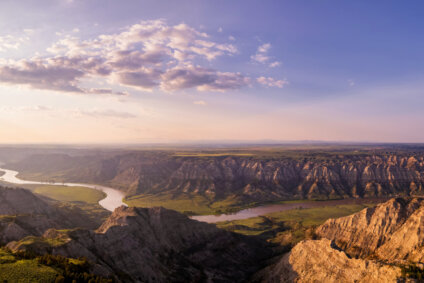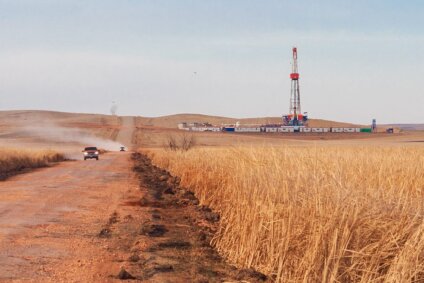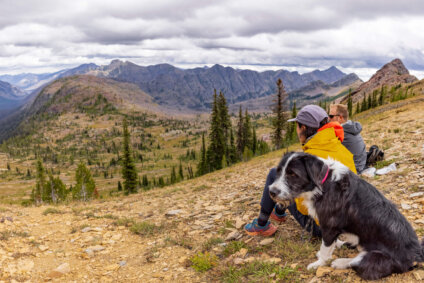A Bright Future for Public Lands on the Lower Yellowstone
The Lower Yellowstone River Coalition has an innovative approach to supporting public lands and access

Have you ever explored the Lower Yellowstone River east of Billings? If you answered no, you’re not alone.
While the easily accessible upper reaches of the Yellowstone are some of the most popular recreation areas in the state, the Lower Yellowstone is harder to access and much less used, despite its stunning scenery, exceptional wildlife habitat, and vast recreation potential.
That’s something that the Lower Yellowstone River Coalition (LYRC) is trying to change.
Last spring, a group of eastern Montana community leaders, business organizations, economic development experts, and non-profit conservation and recreation groups came together to form the coalition, with the shared goal of improving public access along the Lower Yellowstone. Ultimately, by investing in the recreational infrastructure and public lands along the river east of Billings, the group hopes to boost the quality of life for communities along the river, improve public access, protect unique wildlife habitat, attract more visitors, and strengthen eastern Montana’s economy.
The group’s plan also presents an opportunity to build broad community and statewide support for continued investment in key public lands in new parts of Montana.
Many of these public land tracts would benefit significantly from increased funding and care, and the Lower Yellowstone River Coalition’s plan is a unique opportunity to move toward a sustainable long-term future for eastern Montana’s public lands.
The coalition’s plan focuses on a 175-mile stretch of river between Hysham, east of Billings, and the North Dakota border. Specifically, the group has identified three major access gaps along this stretch. The proposal would address these gaps by establishing or improving existing boat ramps, improving access roads, developing small campsites and interpretive sites along the corridor, building toilet facilities and potable water sources, and creating portage trails for boaters to safely skirt diversion dams.
Of course, a project of this size will require significant funding. With hard work, the coalition has already made significant progress toward securing the needed investment. During a LYRC event in Glendive last summer, Gov. Steve Bullock announced that he has asked Montana Fish, Wildlife & Parks to identify $4 million to be applied to the Lower Yellowstone corridor project. The governor also indicated that an additional $4 million in matching federal funds, from sources like the Land and Water Conservation Fund, could be applied to the project, bringing the potential total to $8 million.
We’re proud to be a part of the Lower Yellowstone River Coalition and to support the protection of public lands and waters across Montana.
State lands like state parks, fishing access sites, campgrounds, conservation easements, and wildlife management areas are a critical but often-overlooked piece of Montana’s public lands puzzle, and supporting projects like the Lower Yellowstone River Coalition is an important element of our goal of protecting and connecting public lands and ensuring that they remain accessible to people who love them.
Everyone deserves the opportunity to experience the public lands and waters that make Montana special, and the Lower Yellowstone River Coalition is pioneering an innovative way to protect those public lands for current and future generations.
Improving access to the river will benefit the economy of communities up and down the Lower Yellowstone. New and improved boat ramps, campsites, roads, and portage trails will make it easier for eastern Montana communities to attract in- and out-of-state visitors to enjoy fishing, camping, boating, birdwatching, and other recreational opportunities along the river corridor. This increased income will help spread the benefits of Montana’s fast-growing outdoor recreation economy across the state.
Currently, nearly 30 city councils, county commissions, economic development organizations, and conservation and recreation groups support the Lower Yellowstone Coalition’s proposal, which also enjoys broad support among Montana state lawmakers. This winter, the coalition will also be encouraging community members to sign an open letter demonstrating their support for the project.
“The secret’s out about eastern Montana,” says Billings’ Christine Whitlatch, one of the driving forces behind the project. “The hope is we’ll have the ability, with this new infrastructure, to have more citizens enjoy our quality of life and more visitors enjoy our hospitality.”
I’ll be sure to share the Lower Yellowstone River Coalition’s open letter when it’s published this winter, and I hope you’ll join me in supporting this groundbreaking effort to protect and secure access to more of Montana’s public lands and waters.
Stay Connected
"(Required)" indicates required fields
.jpeg)


